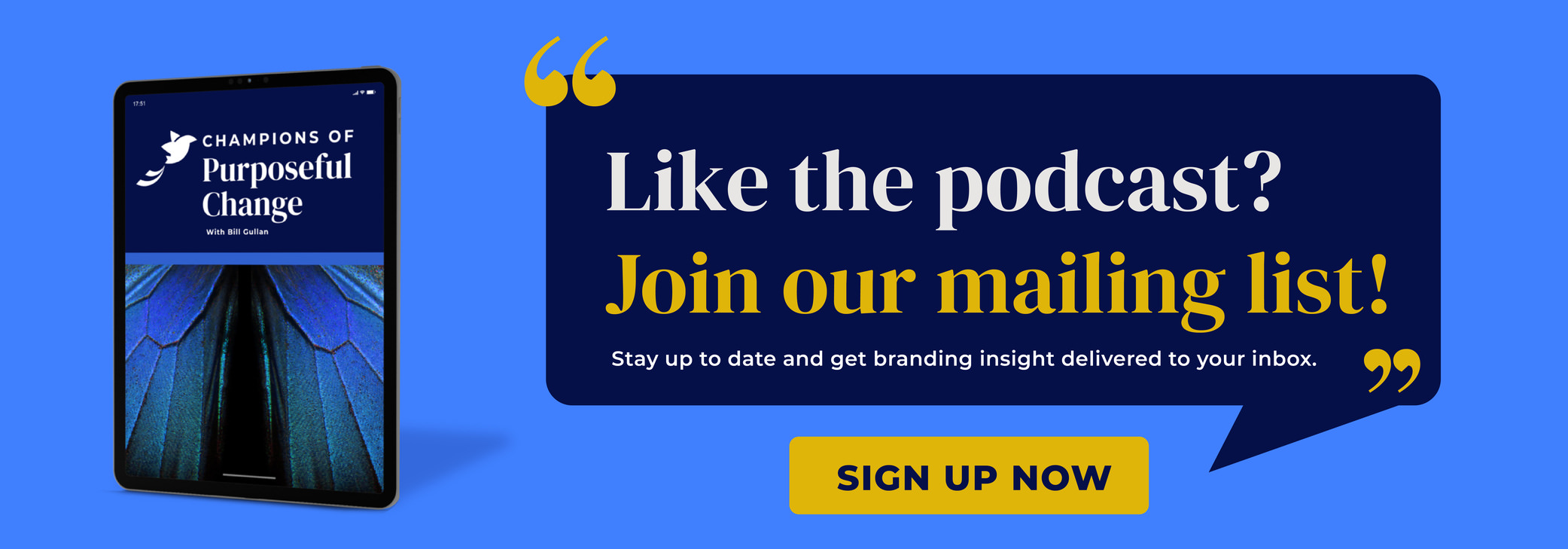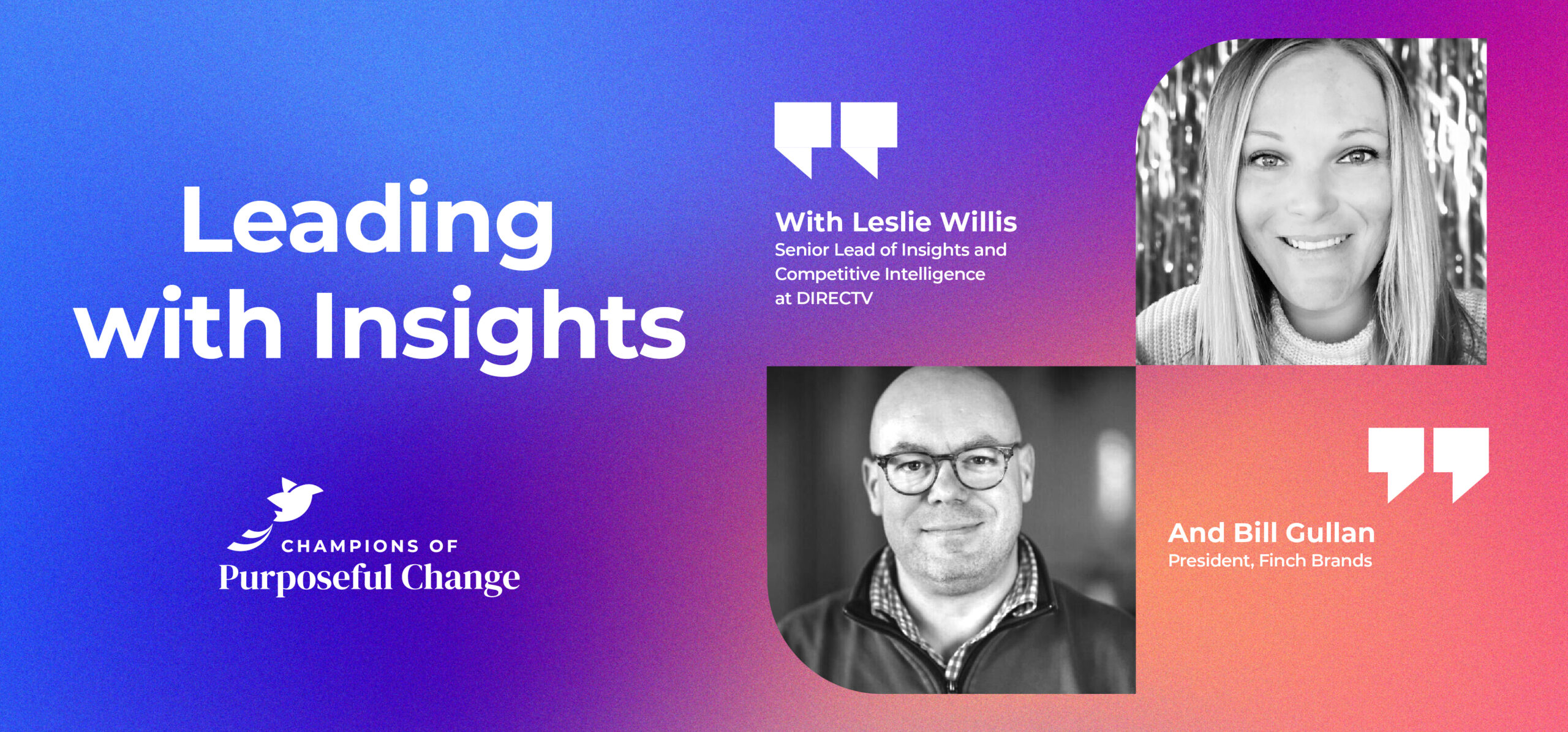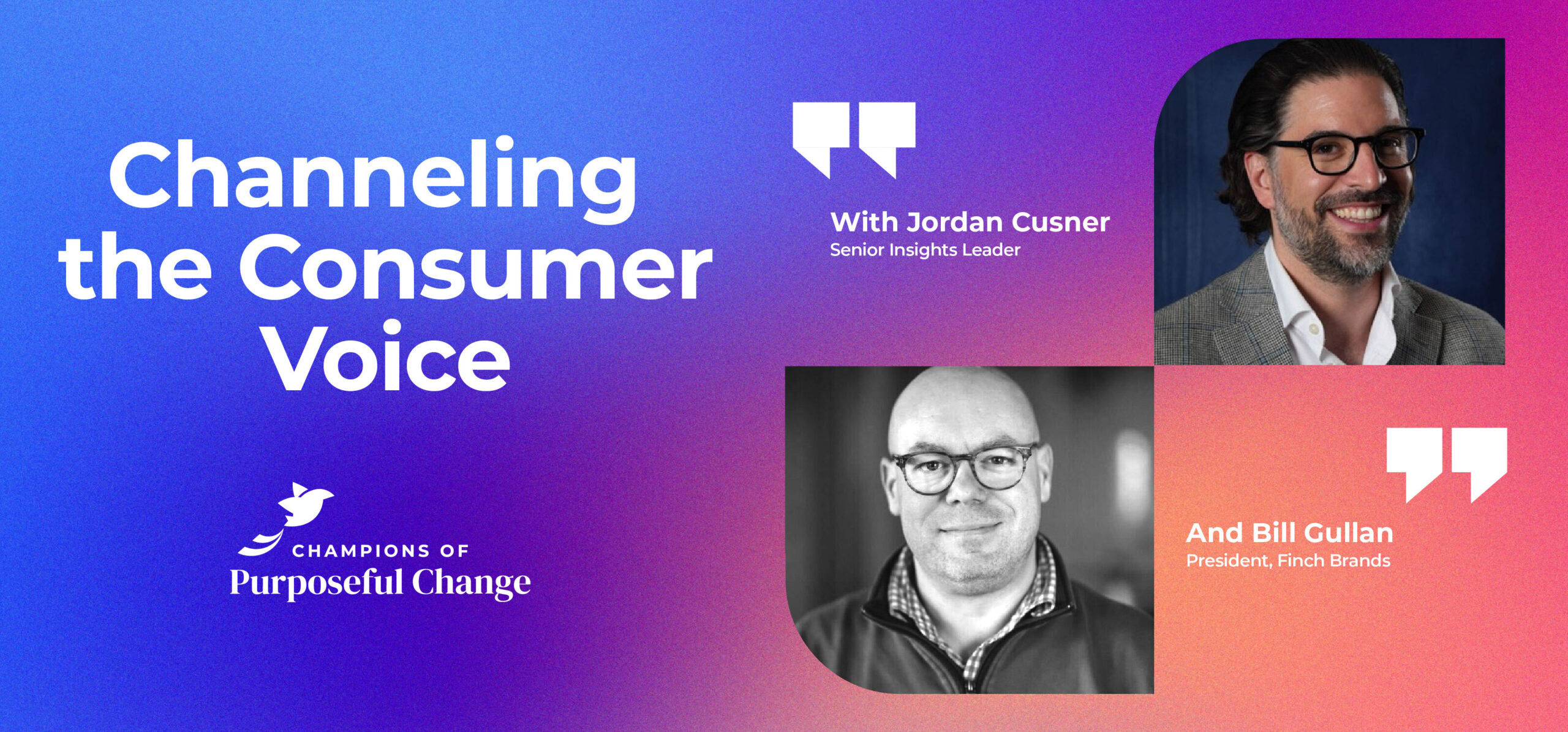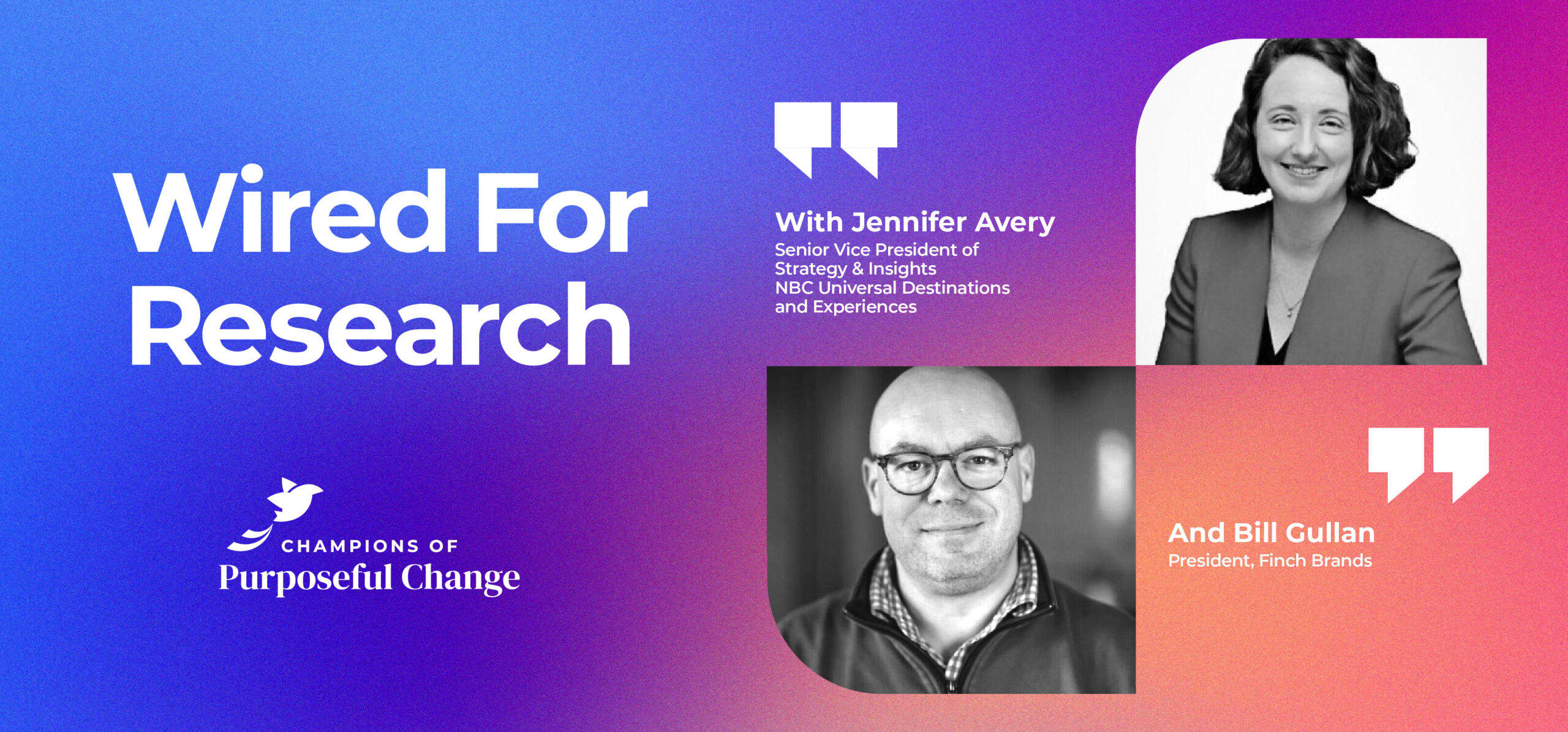One Big Idea: When to Do Market Research
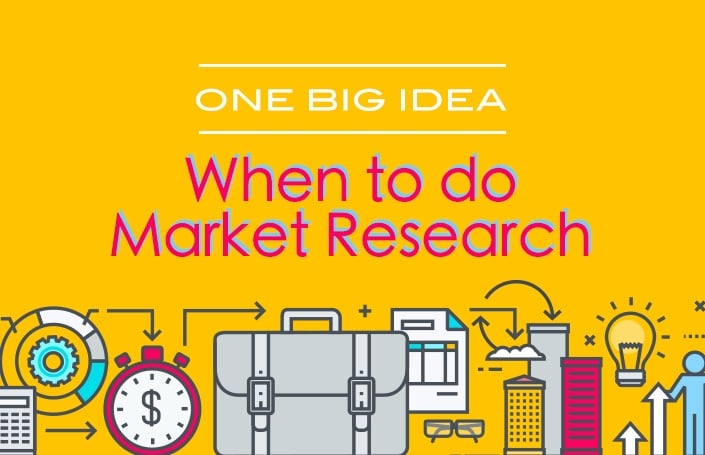
There is a time to listen and a time to lead. In this episode, Bill discusses the right moments to seek the voice of the customer — when consumer insights are most valuable to an organization. If you like our podcast, please subscribe and leave us a rating!
Podcast: Download Subscribe: iTunes | RSSTranscription
Greetings one and all! This is Real-World Branding. I’m Bill Gullan, President of Finch Brands; a premier boutique branding agency. This is One Big Idea and this week’s topic is “When to Do Market Research.”
We had a fascinating conversation last week with Noah Shanok, who was, among other things, the founder and CEO at Stitcher. One of the interesting things that he said was in the area of regrets, for things that he wished he’d known or done differently. He said, that when coming out of Wharton and taking the approach to building a new business, he almost wished that he’d spent less time researching and planning and more time just jumping in and seeing what happens.
Sometimes the quickest way to do something is to do something. I think Noah was reflecting on that and it got me thinking a little about market research, consumer insights, and the entire world of studying the marketplace – either in a secondary or primary way.
This is going to be a strange comment perhaps (coming from the leader of a company that does a ton of market research for and with clients), but there’s a time to listen and a time to lead. What I mean by that is the process of listening, capturing, managing, and filtering feedback from your target audience and your customer base is completely and deeply valuable for organizations. This can be across product development, marketing, promotions, design and all these other aspects that have to do with how brands go to market and succeed. However, there’s a time to lead.
Steve Jobs, the late great, used to say he was brilliantly against market research. While he was perhaps being a bit hyperbolic, I can see his point as it relates to completely new concepts like iPods. I can’t imagine moderating a focus group where a consumer would say, with a white space question in front of them, “You know what I need is a way to play my musical digitally and portably.”
When you are innovators and driving the course of categories in areas that no one can contemplate, except for that leadership innovation group within your team, the need or compulsion to study at every step may result in a slightly higher confidence level but also in a waste in terms of time and money.
That said, there absolutely is a time and tremendous amount of value from a skillfully crafted, well-executed, well-analyzed consumer insights or market research. Three moments in particular that I think are important when it comes to research and world-class quality insights are as follows:
1. Within an open innovation process in a mature or maturing category.
You know digital music really didn’t exist. You couldn’t go out there as Steve jobs and the Apple team to say, “Hey! What is it that you want in music?” But what you can do in a category where there are well-established or coalescing pain points or consumer desire is to integrate them effectively into an open innovation process that includes the best minds from inside a company. Consumers can be brought in to talk about those white spaces and those perpetual frustrations that no manufacturer, brand, or product developer has quite mastered for them. Understanding the pain that they go through and the joy within existing categories can be tremendously valuable. Open innovation processes are a way of using consumer insights to drive innovation or drive R&D; a tremendous value when it comes to customer or consumer insights.
2. The second is when you have specific stimulus to show them.
Whether that is testing new product concepts, packaging, elements of customer journey, etc. If I were working at Apple back in the day, I would certainly would have made it a point to integrate consumers into the process of brand launch for the iPod, once there were prototypes or product concepts available. Whether I was evaluating screens, ease of use for screens, the contours of the device, the industrial design, and everything else – the integration with iTunes. I don’t want to keep harping on that example but often we find that the best use of market research, whether it is focus groups or something more quantitative – anthropological or ethnographic, is when one is evaluating and choosing between or helping organizations prioritize a suite of ideas that reach at least the concept description phase (if not the actual proto type phase).
We also would categorize in this area of stimulus testing identities, whether its names, or logos, or taglines for products. Really, we would get asked a lot of times whether to test those things. You probably should if it’s a big bet for an organization, but the perspective you should have is not that the marketplace is making the decision about which one to pick, rather that the marketplace, in many ways, is used most effectively to identify negatives of options that may exist. Whether it’s a word that doesn’t hit folks quite right that you haven’t thought of in that way or it’s a logo that looks like something else either something negative or an existing brand. Often the brand team and the agency don’t see those things. By involving the consumer into that process, you often get a really important read as to whether or not the directions you’re taking with identity, or with creative, are moving in the right direction.
3. The last area I think has to do simply with consumer knowledge and segmentation.
Understanding the ways in which consumers live, what makes one consumer type different from another, and how they think through a process or a period. For example, one of my colleagues, David’s Bridal was their family business and understanding the life cycle of how brides thought about wedding dresses and how they thought about and acted during the various phases from the juncture – even before the proposal was made and an engagement was set, all the way through to the day itself. Understanding how she dreamed about her wedding and how she thought, what she ate, lived, and breathed during that process was tremendously important when it came time for companies like David’s Bridal to be maximally valuable, not only in terms of product but in terms of the entire life cycle of their customers.
There are often many other examples where consumers and the changes that they make within their lives are critically important. We spoke in an earlier One Big Idea about the fact that commerce is downstream from culture. Understanding the way consumers are living, what they are valuing, the choices they are making, and why/how their sourcing information about choices is valuable to do in an ongoing way. So often times, research that really isn’t related specifically, although, you can maybe merge the two purposes to a particular initiative within your company. Often, research beyond that is a tremendous value for those of us who are responsible for being futurists and innovators within our company and well beyond on the communications side, certainly for us here at Finch.
So three ideal junctures at which to conduct consumer research: to support open innovation process, to respond to specific high importance stimulus within a really important process, and then just to segment and understand consumers more deeply.
Interestingly I think here at Finch, at least interestingly from my perspective, we’ve done a lot of custom research over the years. We’ve done tons of custom research projects every year where clients will come with a particular set of questions that they want to have answered. We will strike up the band and build methodologies with which to answer and expand upon those questions to provide a great amount of value and insight to our clients – tether it very strongly to their business needs and context.
We find that we’ve been moving a lot in the directions of what we call our own Customer Insights Community. Which is a panel, a community of users, consumers, customers who were recruited once, then engaged in a continuous feedback loop across a six to twelve month period and well beyond. There are benefits we find of doing research that way, in terms of speed and cost, but you really have a tremendous opportunity with higher responders to do both qualitative and quantitative research methodologies and to do them quickly to study very short-term urgent needs, as well as some of those longer terms needs about how a customer base is developing or the long-term trajectory of a brand.
We’ll devote a future podcast to a deeper dive into the benefits and the execution of the insights community, but suffice it to say, they can soon be coming up more and more for us here at Finch Brands. So that’s it, One Big Idea – “When to do Market Research.” And we obviously have lots of thoughts on how to do this smartly. Maybe that will come up [in another episode], you can feedback to us on twitter or through other sources to discuss specific questions related to how to do this smartly. As noted, times two, that’s it for me! Greetings from the Cradle of Liberty. Signing off, have a great week.
